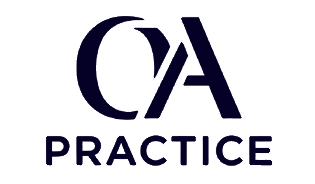D583 Foundations in Public Health - Set 1 - Part 1
Test your knowledge of technical writing concepts with these practice questions. Each question includes detailed explanations to help you understand the correct answers.
Question 1: You're developing a community intervention to reduce diabetes rates in a rural area where residents have limited healthcare access and high poverty levels. Which public health approach would most effectively address these interconnected challenges?
Question 2: A disease outbreak investigation reveals that contaminated water from a local well is causing illness. Using the epidemiologic triangle model, which intervention would most directly break the chain of disease transmission?
Question 3: During a public health emergency, your team needs to quickly identify disease cases in the community. Which surveillance method would provide the fastest, most comprehensive data about current infections spreading through neighborhoods?
Question 4: A public health official discovers that certain neighborhoods have significantly higher rates of preventable diseases than others. What primary role should the official take to address these health disparities effectively?
Question 5: Your health department must allocate limited resources between different prevention strategies. Which approach would provide the most cost-effective long-term benefit for preventing heart disease in your community?
Question 6: A community experiencing rapid climate change sees increases in vector-borne diseases. According to public health principles, which intervention strategy would most effectively reduce disease transmission while adapting to environmental changes?
Question 7: Following the establishment of germ theory in public health history, which development most fundamentally transformed how communities prevent disease transmission and protect population health from infectious agents?
Question 8: In developing a behavior change intervention for smoking cessation, you apply the stages of change model. For individuals in the contemplation stage, which intervention approach would most effectively move them toward action?
Question 9: A state government wants to ensure uniform public health policies across all counties while maintaining efficiency. Based on public health management structures, which system would best achieve these goals?
Question 10: During the cholera outbreak investigation in London, John Snow's removal of the water pump handle demonstrated which fundamental public health principle that continues to guide modern disease prevention efforts?
Question 11: A public health team implements the health belief model to increase vaccination rates. For individuals with high perceived barriers to vaccination, which intervention component would most effectively address their specific concerns?
Question 12: Your department needs to rapidly assess community health status after a natural disaster. Which essential public health service under the assessment core function would provide the most critical immediate information?
Question 13: A new infectious disease emerges with unknown transmission patterns. Based on public health surveillance principles, which initial approach would most effectively identify how the disease spreads through the population?
Question 14: According to social cognitive theory, a teenager observes their respected coach successfully quit smoking. Which behavioral change mechanism is most likely to influence the teenager's own smoking behavior?
Question 15: During a disease outbreak, health officials must decide between quarantine and isolation measures. In which scenario would quarantine be the most appropriate public health intervention to prevent disease spread?
Question 16: A community health assessment reveals multiple determinants affecting diabetes rates. Using the ecological model, which level of intervention would most directly address workplace policies affecting employee health behaviors?
Question 17: Following the acceptance of germ theory, which public health intervention developed by Edward Jenner fundamentally changed how populations prevent infectious disease transmission before exposure occurs?
Question 18: A public health department operates under a shared structure system. Which characteristic best describes how this system manages public health initiatives and resource allocation across the jurisdiction?
Question 19: Your team needs to develop evidence-based public health interventions. Which combination of elements should guide decision-making to ensure the intervention effectively addresses community health needs?
Question 20: During the industrial revolution, Edwin Chadwick's sanitary report linked poverty to poor health. Which modern public health concept does this historical connection most directly represent?
Need Guaranteed Results?
Our exam support service guarantees you'll pass your OA on the first attempt. Pay only after you pass!
Get Exam Support